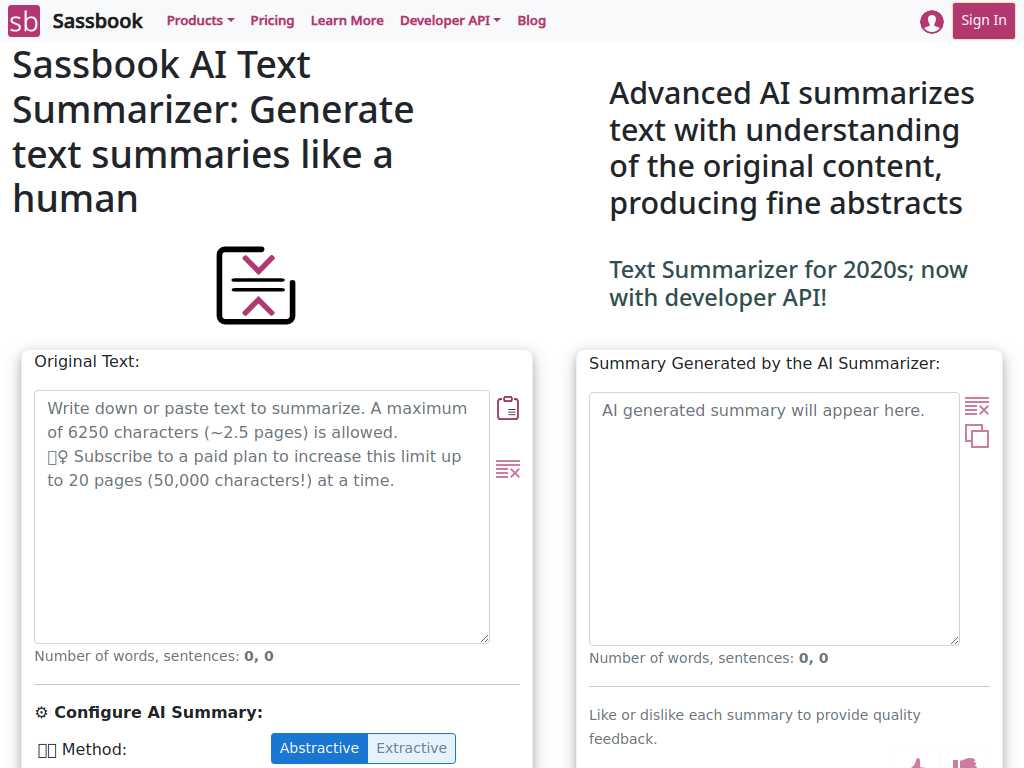AI Summarizer | Sassbook
Education

Unlocking the Mysteries of Neural Networks: A Beginner's Guide
Average rated: 0.00/5 with 0 ratings
Favorited 0 times
Rate this tool
About AI Summarizer | Sassbook
Sassbook's AI Summarizer is an innovative tool designed to transform the way users interact with large volumes of text. Leveraging cutting-edge neural network technology, it simplifies the process of summarizing complex information into concise, easy-to-digest content. This advanced algorithm mimics the human brain's ability to recognize patterns and interpret data, making it an invaluable resource for professionals across various industries. Whether you're a researcher looking to quickly glean insights from lengthy reports, a content creator in need of summarizing articles for broader audiences, or an educator aiming to distill key concepts for students, Sassbook's AI Summarizer provides a seamless solution. The AI Summarizer stands out by its ability to understand and process the structure of neural networks, ensuring the summaries are both accurate and relevant. With its layers of interconnected nodes and sophisticated learning protocols, it adjusts its approach to summarization based on the content's inherent characteristics, making it more efficient than traditional methods. This feature ensures that users receive summaries that not only capture the essence of the original text but also maintain its contextual integrity. Moreover, the continuous learning process employed by Sassbook's AI Summarizer, through techniques such as backpropagation, assures improvement over time. As it learns from each summarization task, the tool becomes increasingly adept at delivering concise summaries tailored to the user's needs. This not only saves time and resources but also enhances comprehension and information retention. For anyone looking to efficiently manage and interpret large volumes of text, Sassbook's AI Summarizer is the ultimate tool, blending convenience, accuracy, and innovation to change the landscape of information processing.
Key Features
- Mimics the human brain's operation
- Multi-layer structure of interconnected nodes
- Learning through backpropagation
- Adjustment of weights and biases in neurons
- Minimizing output error to improve accuracy
- Recognition and interpretation of patterns and data
- Adaptability in learning based on predictions or recognitions
- Applicability in various real-life scenarios
- Overcoming challenges like data complexity and overfitting
- Prominent role in advancing artificial intelligence research